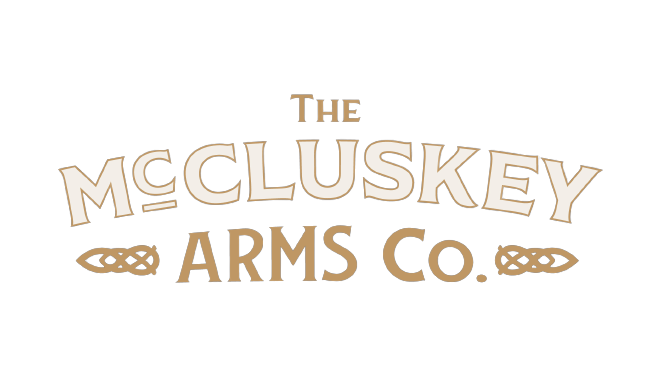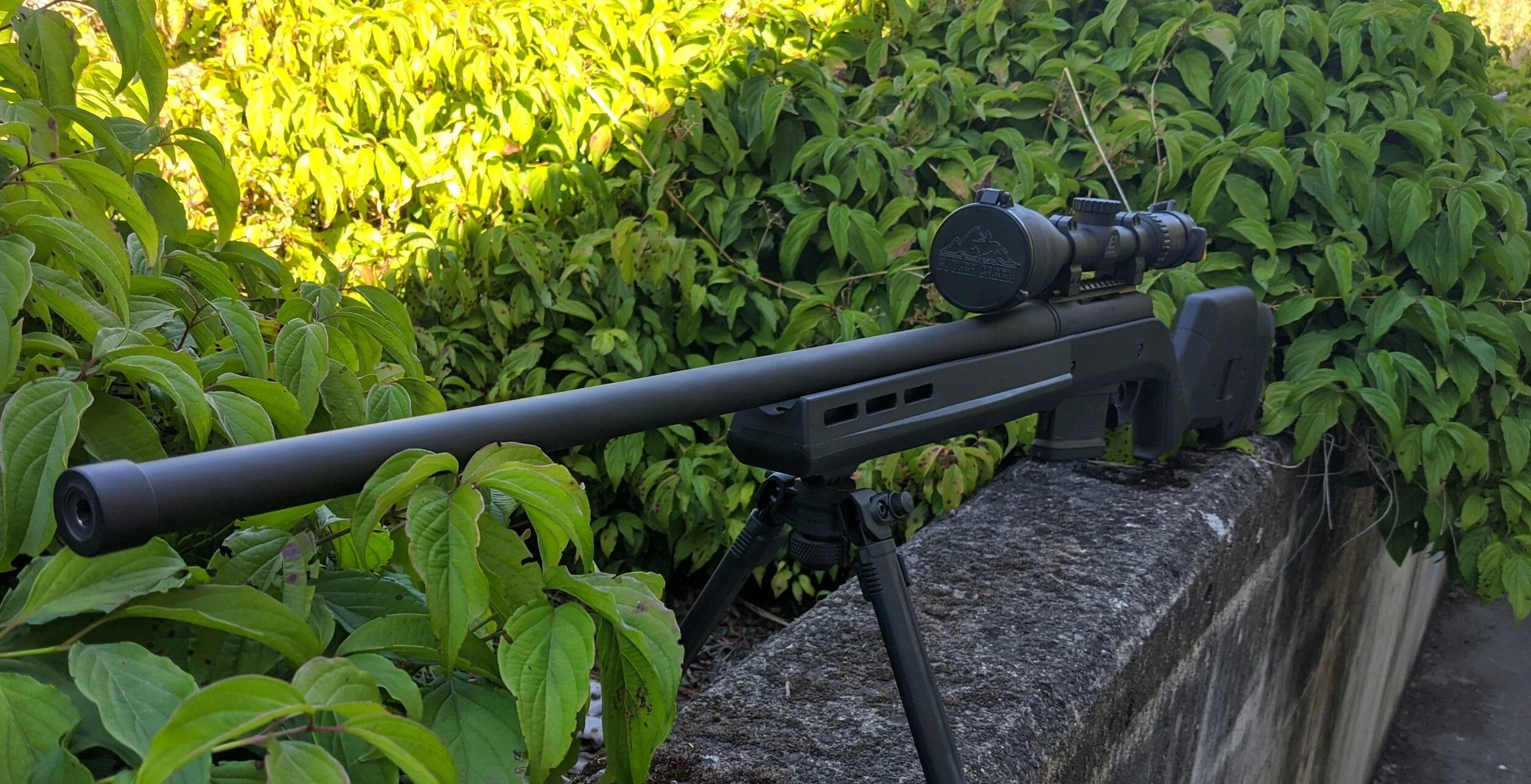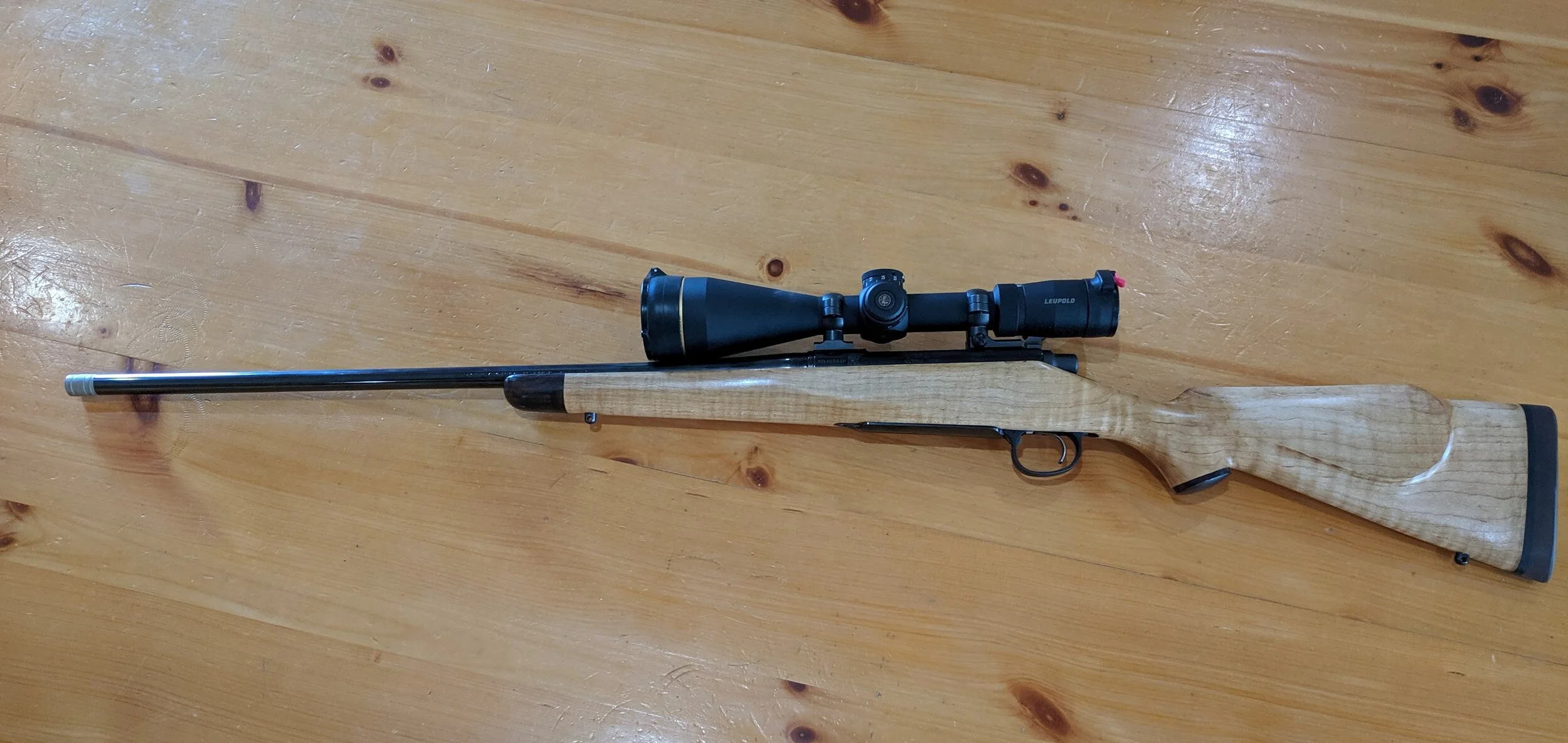Feat of the Week: Remington 700 Rebarrel
The Gunsmithing Story
This feat of the week is about rebarreling Remington 700s. We have over a dozen Model 700s checked in for various services right now, but most of them are getting rebarreled. We can’t wait to tell you more about this service and the Remington 700. So let’s get started!
While the Remington 700 was considered the most accurate factory bolt gun, we get a lot of customers asking us to accurize their rifle by rebarreling it. To start a rebarrel, we remove the old barrel and begin turning a barrel blank—a metal bar with a rifled barrel hole. We contour the blank on the lathe by removing a ton of material. This used to be an extremely time consuming process for us, but we recently purchased a new ProtoTRAK CNC lathe which cut our contouring time down from five hours to forty-five minutes.
The TikTok famous threaded barrel and muzzle brake was for a Remington 700.
After the contouring is complete, we thread the barrel to fit the receiver and chamber the barrel in the customer’s desired cartridge and caliber. About half of our Remington 700 rebarrel customers are rechambering their gun in a different caliber and/or cartridge. Each cartridge/caliber has its own chamber reamer—an exact negative. Cutting the chamber is a precision lathe job which requires a lot of setup time and attention to detail. Once the rebareling service is complete, many customers request additional services such as glass bedding, scope mounting, or threading for a muzzle brake.
For a long time, the Model 700 was the best-selling bolt-action with more than 5 million sold in over fifty different cartridges. Though it was released in the 1960s, the history of the Remington 700 begins during the interwar period.
Remington 700 History
After World War I, Remington began working on a bolt-action rifle for the hunting and sporting worlds. In 1921, they released the Model 30, a bolt action based on the 1917 Enfield. They were heavy, expensive, and only a few thousand sold. From 1926 to 1949, they replaced it with the Model 30 Express which was a shorter, lighter version of the original Model 30.
The Model 720 was designed to replace the Model 30 Express, but the manufacturing demands of World War II stifled production. The U.S. government, in 1940, asked Remington to operate ammunition and ordnance plants during World War II. In addition to their other operations, they managed a total of four plants for the government during the war. In 1946, after the war ended, Remington closed the cartridge company and began focusing more on rifle production.
With soldiers returning home from battle, Remington sought to build a gun which would propel them to the top of the sporting industry—at that point, Winchester and Savage were dominating the market. Mike Walker, an engineer at Remington focused on accuracy, worked on a design to improve the Model 720.
In 1948, Remington released the 721 (long action) and 722 (short action) models to compete with the Winchester Model 70. Built to undercut its competition, the Models 721 and 722 were much easier and cheaper to produce. Unlike previous designs, the receiver was cylindrical and could be produced on a lathe, requiring less machining steps. In 1958, Remington release an upgrade known as the Model 725.
In 1962, Remington released the Model 700 along with the 7mm Remington Magnum. In addition to the hot new cartridge, the 700 was aesthetically improved with a checkered walnut stock, checkered bolt handle, and modern looking tang and trigger guard. This Remington was cheaper to produce than the Mauser 98 rifles but looked just as good and was more accurate.
The military was so impressed by the Remington 700 design and accuracy that the USMC M40 (1966) and the Army M24 (1986) sniper rifles were based on the Model 700. Law enforcement, too, began building their sharpshooter rifles from the Remington 700 receiver.
Its out-of-the-box accuracy comes from several factors: 1) the cylindrical receiver machined on a lathe which allowed everything to be turned on a center, 2) factory bedding with a floated barrel, 3) fast lock time between the trigger pull and powder ignition, and finally 4) tight tolerances in the chamber and bore.
With accuracy as the cornerstone of the Remington 700 success, this bolt-action design has been copied over and over again. And, much like a Glock or AR, there’s a massive aftermarket for it. Anyone can build a Model 700 without a single part from Remington. Customization is one of the industries biggest trends right now—even for a rifle built in the 1960s. For our customers, rebarreling their Remington 700 in the cartridge and caliber of their choice is the most popular customization service.
Complete Custom Remington 700 Build by McCluskey Arms
Next Up
We hope you enjoyed this week’s gunsmithing feat. Thank you for following along! We post new blogs every Tuesday at 10am PST. Please comment for any content you want to see.
If you loved the services you saw today, check out our online store! You can start shopping by clicking here. Or drop us a message here. We look forward to meeting you and gunsmithing for you
Please subscribe to our blog below and don’t forget to follow us on social media!
Sources:
https://www.americanrifleman.org/articles/2014/4/9/a-look-back-at-the-remington-700/
https://www.americanrifleman.org/articles/2012/11/30/remingtons-model-700-the-first-50-years
https://www.range365.com/gun-week-remington-model-700/
https://www.rifleshootermag.com/editorial/before-the-remington-700/383514
https://www.rifleshootermag.com/editorial/featured_rifles_rs_remingtonhistory_092008wo/84298




